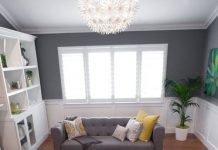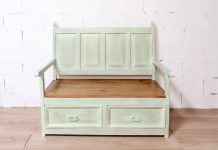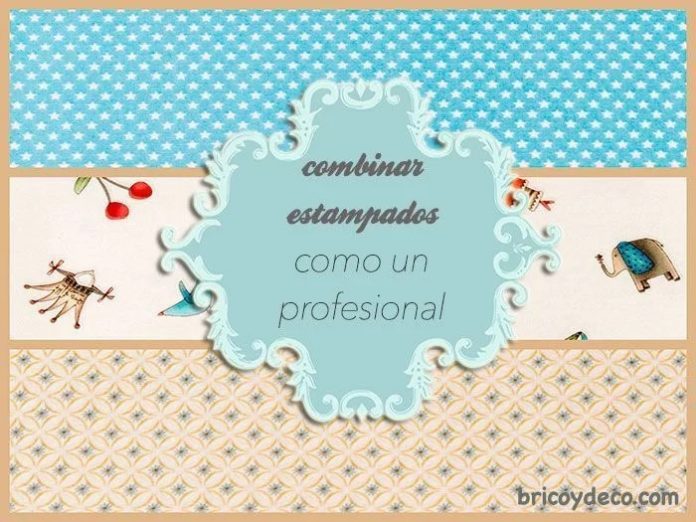
I love spaces that combine different colors and motifs, however I have always found it difficult to do so harmoniously. Since I am guided by these keys to combine prints I have achieved good results without much effort, keep reading if you want to know them.
Until recently I was afraid to mix different patterns, I usually combined a pattern with plain fabrics and neutral colors as it was a safe bet, but also monotonous and a bit bland. The turning point was marked by the last cushion that I decorated with textile vinyl (you can see the step by step in this link).
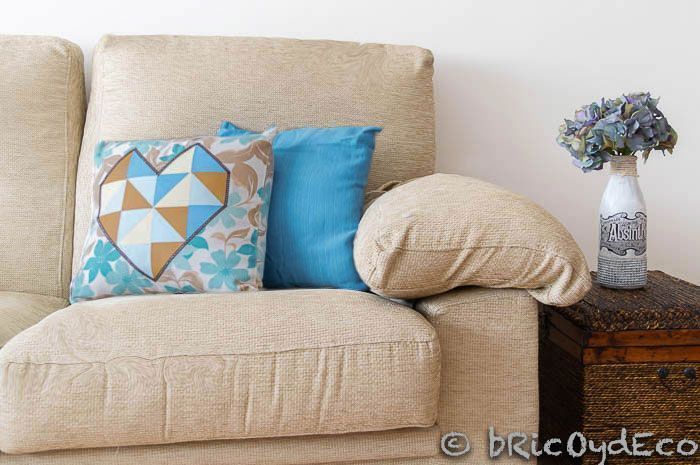
I really liked the result of merging a flower fabric with a geometric motif and this encouraged me to investigate and experiment with different mixtures, until I came up with a series of keys and tricks to combine patterns and that I share with you.
Something in common
One of the main rules when decorating with different patterns is that there be a common link among them, for example that they share a color, a style (vintage, retro, classic…) or a motif (geometric, floral, nature…).
Rule of three
When mixing patterns we must be careful not to saturate the room. For example, if we choose 5 different patterns for a small room, it can give the feeling of being overwhelmed. On the other hand, if we combine only two types of motifs, our composition can be a bit lame and without much meaning.
For all this, the combination of three prints It is usually quite balanced since it allows us to create spaces with life but without overloading them excessively.
Four steps to success
at the time of mix different patterns We will have a better chance of being successful if we follow the following steps:
1st.- Starting from a base pattern. When we go to buy fabrics we must choose one that we like and from there look for the rest of the fabrics that combine with it.
2nd.- Identify the type of print. Once we have our base fabric we must identify the type of print. Broadly speaking we can divide the prints into geometric and the rest.
A geometric print contains one or several geometric shapes (circle, square, rectangle, star, pentagon, etc.) that are repeated in a pattern. Some examples of geometric patterns are moles or polka dots, Vichy squares, triangles, chevron patterns… (you can see a home decorated with geometric patterns at this link).
The rest of the prints are those that have motifs related to nature (flowers, leaves, branches…), animals, objects (cups, chairs), letters or text, children’s motifs, etc.
If your base pattern is geometric, you should look for a second fabric that does not contain that type of pattern and vice versa. For example, if your base fabric has a flowery pattern, look for another with a gingham pattern to match.
3rd.- Highlight a color. If there is a color in the base fabric that you want to highlight, find a second fabric that contains that color.
4th.- stamping size. To choose the third fabric we will take into account the size of the print of the previous two. If both fabrics have a small pattern, we will choose a larger one for the third and vice versa. On the other hand, if the two fabrics are different sizes, the third fabric will have a smaller or larger pattern to maintain the 2:1 ratio (two large and one small pattern or two small and one large pattern).
Some practical examples
Let’s see some practical examples to better understand these keys to combine different patterns.
In this case, the base fabric (the one in the center) has a plant motif, so the second fabric to combine has been chosen with a geometric print (horizontal stripes). On the other hand, we wanted to highlight the orange color of the base fabric and for this reason the second fabric has stripes of that same color. The third fabric has also been chosen with a geometric print but with a smaller motif than the other two.
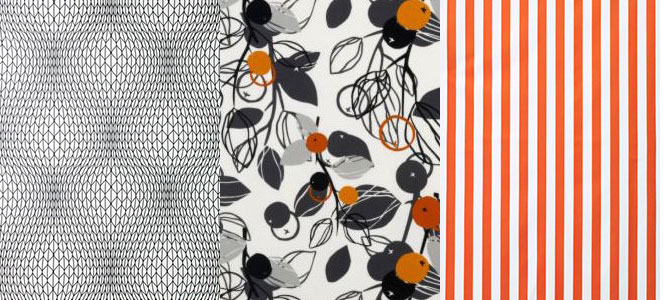
Ikea fabrics
If a bedroom was decorated with the previous combination, a wallpaper could be placed on the head of the bed with the orange stripes pattern, the bed would be dressed with the base fabric and cushions with the small geometric pattern could be placed.
In this second case, the base fabric has a geometric print (vertical stripes) so another fabric with a floral print has been chosen to combine it. Both contain the same shade of blue and a large pattern, which is why the third fabric (the one on the left) has been chosen with a smaller floral motif.
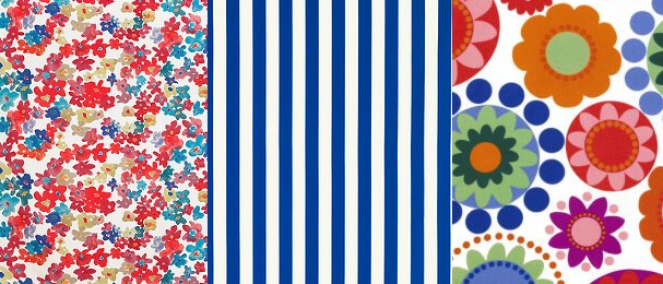
Ikea fabrics
If a living room were decorated with these prints, the fabric with large flowers could be used for the curtains and the sofa decorated with cushions made with the other two fabrics.
For this last example I am going to use three fabrics that I bought a few weeks ago. I first chose an object print as a base and combined it with a geometric print (small stars) that contained the same blue-green as some of the motifs on the fabric. To finish I chose another fabric that also had a small geometric print.
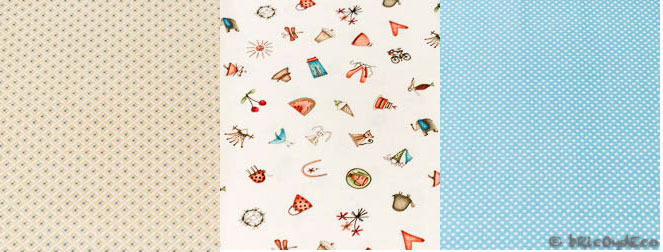
All these keys to combining patterns are not only applicable to fabrics but can also be used to make combinations with wallpaper, patchwork or scrap, to name a few examples.
How about combining different prints? I hope that these keys will help you create beautiful decorations that have nothing to envy to those made by a professional.
You can find more DIY and decoration tricks at Thank you very much for commenting and sharing!…


